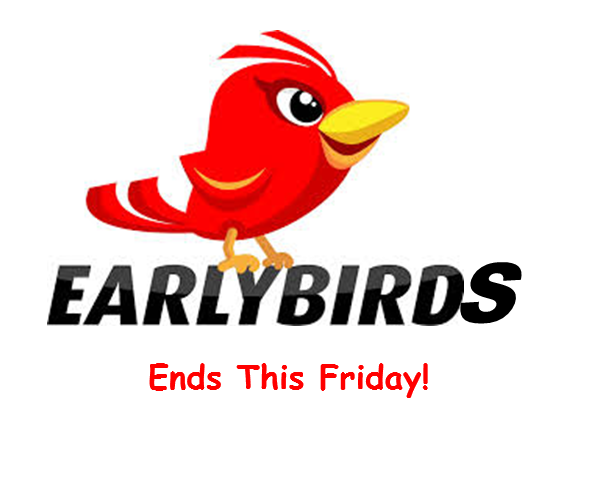As things return to a new normal, events are starting to take place again both online and in person. This means that getting attention to your event can be a challenge and standing out even more so. Here are 15 ways you might want to try to promote your next event.
1. Have a Killer Website
The likely first touch point any potential attendees is your event website. That means you want this site to be engaging and most of all usable by those visiting. Keep the layout clean and don’t overload your pages with screeds of information. Make sure that the key information is visible and easy to find and take time creating your checkout experience. Don’t be afraid to spend some time and money having someone usability test your site.

2. Create a Social Media Presence
“One of the greatest tools for marketing an event is at all of our fingertips, social media,” claims event blogger Janetta Steele of Term Paper Help. Facebook, Twitter, Instagram etc. are all amazing avenues you can use to promote your event and the great thing is that they are free to use. Whether it’s sharing existing marketing material or creating quirky posts to get people interested you are sure to be able to drum up some support through the use of social media. You should also take advantage of hashtags and create a unique one related to your event. If you can get that trending, then you’ll inevitably draw more eyes to your event.
3. Create Video Content
Whether you do it professionally or just with your phone camera in the office, video content provides an easy way to disperse information that is easy to digest and importantly easy to share. You can show event set ups, behind the scenes looks at what’s happening or highlight reels from previous years.
4. Create Infographics
Visually dispersing information is a fantastic way to go so beyond videos it’s worth considering infographics as a means to share your event. This gets key information out in a fun manner that is easily shared and are relatively low-cost.

5. Consider Creating or Hiring a Mascot
The best place to look for this is Japan with their use of mascots for almost everything. A cute mascot will draw people in and is great as a method of advertising in your videos and promotional material. On top of this, people will likely want to take pictures with your mascot and likely share them on their own social media creating more brand awareness. This is only cost effective if your event will last a few days and if the mascot can be used in branding in general. You don’t want to spend money for more than 3-4 days on hiring a person to be the mascot and you don’t want a mascot who only appears for a specific event.
6. Branded Merchandise
Building on from this is the idea of creating branded merchandise for the event. T-shirts, stickers, tote bags and pop-sockets are all good merchandising options that you could offer as freebies to those who attend the event that also offer you some free marketing if people use them. If you have a mascot, you can even use them on the merchandise to generate further interest.
7. Early Bird Registration
This merchandise can also come in handy when it comes to things like early bird registration. People who are interested in the event and attended previous events may want to make sure they are registered as soon as possible. Offering people early bird rates is one way to attract people, or in the case of regular attendees makes it feel like they are right to keep up to date with the event. You can even enter those early birds into raffles for some of the branded merch you have, perhaps something a bit bigger or more expensive than what you will be giving out at the event.

8. Host Pre-Event Webinars and/or Podcasts
You can build buzz around your event by having pre-event shows either in the form of webinars or podcasts that allow you to share the latest news about the event or to build up a surprise guest you have attending. This becomes massively impactful if you have a lot of things going on that you want people to know about, you can drip feed this information to people in easily watchable/listenable chunks.
9. Use the Press
Social media is fantastic but don’t forget to utilize traditional media and the press where you can. If you are a local event, speak with your local paper and try and get them to post about your event. Buy marketing space from them and give out press passes to journalists to attend the event as a way to encourage them to cover it. This may not pay off in your first year, but you definitely will see the payoff in future years from readers who may have missed out.
10. Livestream Content
This took off massively during the lockdown and is now being integrated into a lot of events worldwide. Livestreaming content on your site means that those who cannot attend in person are able to still get the experience of the event from wherever they are. You could put some of this behind a paywall to
gain some more money, but if you have an event that you think you can feasibly show for free it’s definitely worth doing in order to get people bought into your event. You may also want to put digital archives of previous streams on your site that people are able to access as well in order for people to see what they might expect from your event.

11. Use Influencers
We live in the age of influencers; people will follow influencers online and feel loyal to them and their ideals. By partnering with an influencer, you could find that word of your event starts really taking off. Just be careful to not overdo this and come across as false. Don’t pull a Fyre Festival and spend all the budget on your influencers and not the attendees.
12. Create Partnerships with Local Businesses and Sponsors
Even without influencers, it’s important to create lasting partnerships for your event. Whether this is with general sponsors or with local businesses it cannot harm your event to have people onside who will also want to promote your event for their own benefit. If you create a good partnership, you may even get freebies from them to add to what you give to attendees or that you can use in giveaways or competitions as prizes. It also means you are likely to be able to bring them in again for the event next year with little convincing.
13. Countdown to the Event
There’s something about a countdown that just builds excitement, we love them whether it’s a countdown to Christmas or that final ten seconds before the new year. If you have a countdown on your site to the event, you’d be surprised by the excitement this can drive from attendees. To add to this, you can use this countdown effectively on social media to build up hype before the event with exclusive content releases, announcements, and giveaways to attendees as you near the day.
14. Encourage Attendees to Share
The biggest source you have at your fingertips to promote your event is the attendees. It’s all well and good to spend money on merchandise, mascots, marketing, and media appearances but this is worthless if no one attends the event. Encourage attendees to share their experience, have signs everywhere with the hashtag, and encourage them to use it. Do giveaways and give out freebies where you can in order to get the attendee to share more about the event. Build a good online para-social relationship with them and build a rapport that you can use to encourage them to tell their friends about the event and come back again.
15. Run a Good Event
Most importantly make sure the event runs smoothly and that you have all avenues covered to prevent your event from being a total disaster. There’s a reason why events like Fyre Festival and Tanacon hit the news and they weren’t good, it’s not worth spending a lot of money to get people in the doors if there’s nothing there when they arrive. Keep your promises and make sure your plans are feasible. This is easier for longer-running events, but for new events, it can be so tempting to promise the earth. Start small and build your brand. This is summer so why don't you think about a Summer Deal Event?

Overall, it’s easy to market an event and there are many ways to promote this to potential attendees. It’s good to start with the basics, have a good plan for the event and make sure the website is usable and accessible to attendees. Make use of social media where you can in order to promote the event and try and build up lasting partnerships where you can. If you have the money, splurge out more on merchandise and mascots to draw in more of a crowd. But most importantly don’t forget what your event is and those who will be attending it are the most important areas of all.
Madeline Miller is a blogger who is experienced both in attending and helping to run events.



